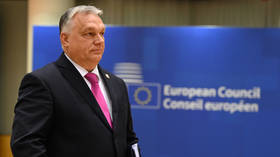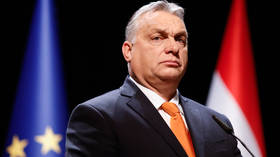EU to bypass €20 billion Ukraine aid veto – FT

The European Union is reportedly exploring a way to bypass Hungary's opposition to continued funding for Ukraine, the Financial Times reported on Tuesday. The proposed workaround involves individual EU member states providing guarantees to the EU budget, allowing the European Commission to borrow up to €20 billion ($22 billion) for Kiev in the coming year.
Earlier this month, Hungary vetoed a €50-billion four-year aid package for Ukraine, prompting Brussels to seek alternative strategies ahead of an upcoming summit in February 2024.
Unnamed EU staffers reportedly told the Financial Times that this debt model is considered the most practical option among several being considered. The EU previously utilized a similar structure in 2020 to secure additional funding for member states during the Covid-19 pandemic.
While specific terms are yet to be finalized, the plan would not require financial guarantees from all member states but only those with top credit ratings, thus bypassing the need for unanimous support.
The FT quoted one official as noting, however, that while there is no “technical problem” in the scheme’s way, it may prove to be “more complicated” politically.
Another option being discussed involves extending the existing funding structure used in the current year for up to an additional year. Despite these considerations, according to the FT, the European Commission reportedly maintains hope for the original €50-billion package to be approved, aiming to provide funding to Kiev by March at the latest.
Last week, the Financial Times suggested that Hungary's opposition to Ukraine's aid had led some EU members to contemplate invoking Article 7 of the Treaty on European Union against Hungary. This provision allows the suspension of a member state’s voting rights if it consistently violates core EU principles.
The report, however, stressed that this idea was met with limited enthusiasm, with many preferring to encourage Hungary to align with EU policies by outlining the potential “full costs” of its isolation.













